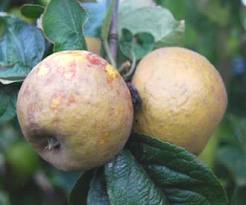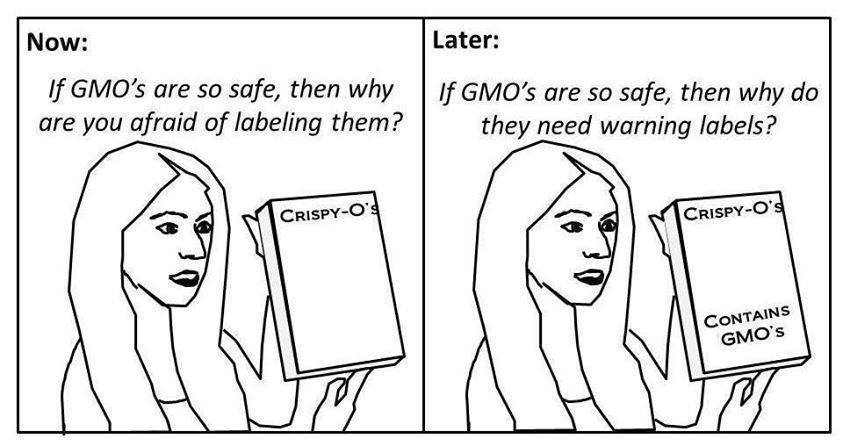While genetic engineering (GE) has promised much, it has had some delivery, but genetic engineering is not the answer to all of our food issues. Here are five issues that face our hungry planet and what GMO can and cannot do
Biodiversity
The genetic diversity of our food supply has been decreasing for some time. While GE represents a rapid way to alter crops in case of a new blight, pest, or drought, it is still important to maintain as much biodiversity as possible. Seventy five per cent of apples sold in the US come from five varieties, however, it is estimated that there are over 14,000 types of apples that have been raised in the US. Most tomatoes are from a few seedlings, and are bred for packing not for flavor.

The Knobbed Russet Apple- no one would buy it, but it is flavorful. If we could have this flavor in a beautiful apple…
Maintaining biodiversity is important to our food supply. GE doesn’t change that – it does not diminish it, but GE can increase biodiversity. Already genes from hearty apple stocks are being placed into other apples to make new apples, with new genes that can resist pests, withstand drought, and use less herbicides. Without GE, to make those changes requires many generations of cross-breeding. Cross- breeding is less specific and takes years, much longer than GE. The honeycrisp apple was first bred in 1960 but was not even ready for mass sales until fifty years later.
More Super weeds with GMO Foods
Weeds will always be a problem, whether the crops are GMO or not. When you use herbicides there will be a natural selection for weeds against that chemical (that is nature, it is natural selection, it is the basis of evolution and life). There is no way to avoid that. Those who say we can disc land and use old techniques forget that such methods are terrible for the topsoil (history – see dust bowl of the 1930’s). So if you have a roundup ready crop you can develop roundup resistant weeds.
The facts have been clear- there is less use of herbicides with the new GMO corn, soy beans, and cotton. You have to ask – which set of chemicals do you want on your crops- the non Roundup herbicides are much more potent carcinogens. Famers in Illinois, Wisconsin, and Iowa have saved billions of dollars by not using as many chemicals with GMO crops (source- University of Illinois).
The latest GMO plant is a bust – the pheromone producing crop in England
There will be misses. While GE is faster than hybridization and cross-breeding, it still doesn’t mean that there will be perfect answers to the problems of pests. Check with the many varieties of corn, cotton, soy beans, apples, and other crops that have been busts. The difference is with GE we can precisely add a gene to a plant. Will GE solve the world’s problems- well, it is one approach. Science has been promising things for GE for years- but consider this – penicillin was first discovered in 1928. It was not first used on a person until 1940. It could not get produced fast enough and was not mass produced until 1945 – when they found the perfect mold on a cantaloup in Peoria, Illinois.
My lab did the first GE across species and published it in 1982 – and the plant world started working with it five years later. Now we have 85% of US crops as GMO, and have solved many issues – but not all. I am no longer working in the field – now I eat GMO, but I don’t create them.
GE is complex, it is a shotgun approach to the DNA
GMO crops have been here for 15 years, and there is no harm seen. There are over 400 articles published about the safety of GE crops. But the technical side of GE engineering has greatly improved – it is not shotgun as Steve Druker book: Altered Genes: Druker’s New Book is Filled with Logical Fallacies . With the advent of CRISPR editing genes is almost as easy as doing this WordPress article.
Local, Organic, and Fresh – Can We Feed A Hungry Planet? Don’t be elitist
I love great local vegetables. I have my own herb garden and grow my own tomatoes. I can afford to spend three times as much on apples. But many cannot afford those – most of them are my patients. I can eat out at great restaurants (of course, I do, and with Simon Majumdar we have fun traipsing around the world with our new FORK U enterprise). But local and organic are elitist. We have to feed a hungry planet. Oh – and don’t tell me How Much Water to Make a Pound of Beef because it doesn’t take that much – unless you spoil it.
GE is not all the answer- it is some of the answer. Oh – do we need to label it. Well, that battle is probably lost, I say go ahead and label it but don’t fall into the issue of the cartoon:

